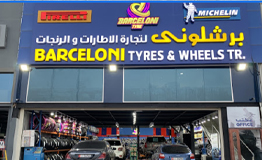Driving, riding, off-road, rally, racing, there is an endless list of what we can do with our cars. But the point is that tires, like legs, are necessary for cars to move. It may have a powerful engine, 4 × 4 transmission, and impressive design, but hey, if your vehicle lacks the right tires, you’re not going anywhere! Tires are the most overlooked important aspect of a car, and mostly overlooked because cars are made with them and they don’t get much attention unless they get damaged or it’s time to change them.
It is equally good to note that your vehicle is designed to run on specially designed tires and installing a tire simply will not work. we will tell you about the intricacies of choosing the right tires for your beloved car.
Know Your Tires
Before choosing a tire for your car, you should familiarize yourself with the tires available. The tire on your car contains a great deal of information that you need to know. Not just for factory use, these numbers give you complete information on the tire. Despite the high costs, tubeless tires pay off because they require little maintenance and are much safer than tubular tires. Plus, the lack of hose gives you more control on the road, making for a pleasant driving experience.
Choose the same size
The tires that come with your car are the best for your car, unless you want to modify the way your car drives. The thing is, if you choose tires larger than the prescribed size, it will have a significant impact on drivability, mileage, and efficiency.
Choosing a larger tire for aesthetic or technical reasons may sometimes not meet the needs of the vehicle. For example, a wider tire can be an obstacle in the wheel arch, while a larger tire can have the same effects, not to mention the effects on overall driving dynamics and the vehicle. Your car’s odometer reading will be skewed as the overall wheel rotation would be different. However, some vehicles allow a minimum 3% increase in overall tire size. Consult a professional before choosing a larger tire. Never go for a smaller tire as it will not perform the way you envisioned and could cause a great deal of trouble in the long run.
You let your tires roll on the asphalt and, like the other components of your vehicle, you must take good care of them. This is especially true for the profile of your tires, as the service professionals at Portsmouth Used Car Center can confirm. The tread of the tires is important as it gives your vehicle a firm grip on the road so that it remains balanced and upright on the surface while driving, and even replacing your current tires with a new set if necessary.
The tire profile comes naturally to most people. You may have a general idea that there are different tread patterns and depths, but you may not have a complete understanding of how the tire tread works. Understanding the meaning of the tire tread and the various tread patterns helps people drive safely and comfortably.
Why tire tread is important
Normal tires have a tread, unlike racing car tires, which do not have any tread. Ordinary tires are designed with a tread pattern to keep a car stable and safe in various road conditions. Race cars use non-tread tires because slick tires provide better traction in dry conditions.
However, when the surface is wet, the driver suddenly needs the grooved tread that sucks the water out of the tires. Otherwise, water will enter between the tire and the road surface, causing the driver and the seaplane to lose traction. The tread pattern of a tire is designed to displace water so that the tire and the road remain in contact. If you only drive on dry, level surfaces, you can get by with a slick tire. However, since rainy and snowy days are pre-programmed in most parts of the country, tread tires are the best choice for safe driving.
The tread also allows the tire to dig into the ground surface for better grip, such as when riding on sand, dirt or mud. Under these conditions, the depth of the tread can allow for a safer ride, better handling, and a more comfortable ride.
If you drive with tires for a long time, the tread wears out. However, you should not let the tread depth drop below the recommended minimum level. Otherwise, you will not be able to maintain effective contact with the road or handle and brake well. As soon as the depth of the tread wears below the critical level, you can easily drive without a tread. Your car may not stop properly when you brake, especially when the road is wet.
Controlling the tread depth of your tires is as important as choosing the correct tread pattern for specific road conditions. If you are not sure which profile is right for your needs, or if you have questions about the safety of your profile depth, stop by for an inspection.
What are the different tire tread patterns?
There are four types of tire tread pattern. You can also view them as tread designs. Each has a different purpose and is designed for different riding styles.
Different tread patterns are defined by designing continuous ribs, grooves, independent tread blocks, and grooves (the thousands of tiny grooves in the tread). The purpose and design of each is to provide traction and handling, limit road noise, and reduce tire wear. When choosing a tire, it is important to choose the tread pattern that best suits your vehicle use.
Different tire tread patterns
Symmetrical tread patterns
This is the most common tread pattern. It has a pattern of continuous grooves or blocks throughout the tire. It is a versatile tire, ideal for standard or low-performance passenger cars.
Directional or Unidirectional Tread Pattern
These tires are designed with a unidirectional V-shaped tread pattern to draw water through the treads and resist hydroplaning at high speeds. These tires can be shifted from the front axle to the rear axle to compensate for wear, but not from one side of the car to the other unless it is remounted.
Asymmetric tread pattern
The tread pattern changes across the entire surface of the tire. This design combines traction requirements in a dry grip with a pattern that diverts water for traction on wet roads. The exterior of the tire has large treads for cornering and stability, while the interior has a smaller tread pattern to increase water drainage and traction on snow and ice. The tire typically has “This Side Out” molded into the sidewall (learn more about how to read the sidewall of a tire here).
It is a most commonly used tire pattern on sports cars that allows for multiple tire rotation patterns.
Directional and Asymmetric Tread Patterns
These tire tread patterns combine the directional V shape that drains water. Tires with this profile should be treated as directional tires for swivel tires.
Advantages and disadvantages of each tread pattern
Each tread has a specific purpose and use. For most drivers, a symmetrical tire pattern is suitable for everyday driving. Other tires offer different advantages and disadvantages depending on the area of application.
Learn the Basics
The key to a good tire is traction. It is the grip of the tire on the road and is caused by friction between the rubber and the asphalt. The rougher the two surfaces, the greater the friction and the better the traction. Rubber and asphalt have a high coefficient of friction, so with a soft rubber tire you can drive on a perfectly dry road without disaster. When the road surface is wet, the tires sit on a layer of water and the friction between the rubber and the water is low.
This is where the tire tread comes into play. The grooves (or “cavities”) in the tires act as a channel for water. Since water can escape under the tire, the rubber stays in contact with the asphalt, ensures good traction and prevents slipping. When driving on mud and snow, the same principle applies: the tread grooves guide snow or mud away from under the tire. The deeper the grooves, the better the wet traction.
How tire treads work
Although the deep grooves drain most of the water, there is often a very thin film left behind. To solve this problem, the treads have many smaller grooves called notches. according to legend, he was tired of slipping on the wet floor of the slaughterhouse and cutting small grooves in the rubber soles of his shoes. In tires, the tread flexes when it comes into contact with the road, causing the sipes to expand and effectively absorb road water.
So, if a good tire needs as many grooves and grooves as possible, why do we need symmetrical, asymmetric, directional, year-round, winter, and cold-weather tires, and dry climate tries as well as racing tires? Unsurprisingly, there is a bit more to tread design than just carving a few lines into some rubber.





Sand Dance Tyres is fast becoming an established name in the UAE for tyres, general maintenance repairs and quick lube changes. We are rapidly expanding across the UAE so there is always a store near you.
SAND DANCE TYRES TR. – Copyrights 2024 – All Rights Reserved. Design & Developed by ICT Information Systems LLC